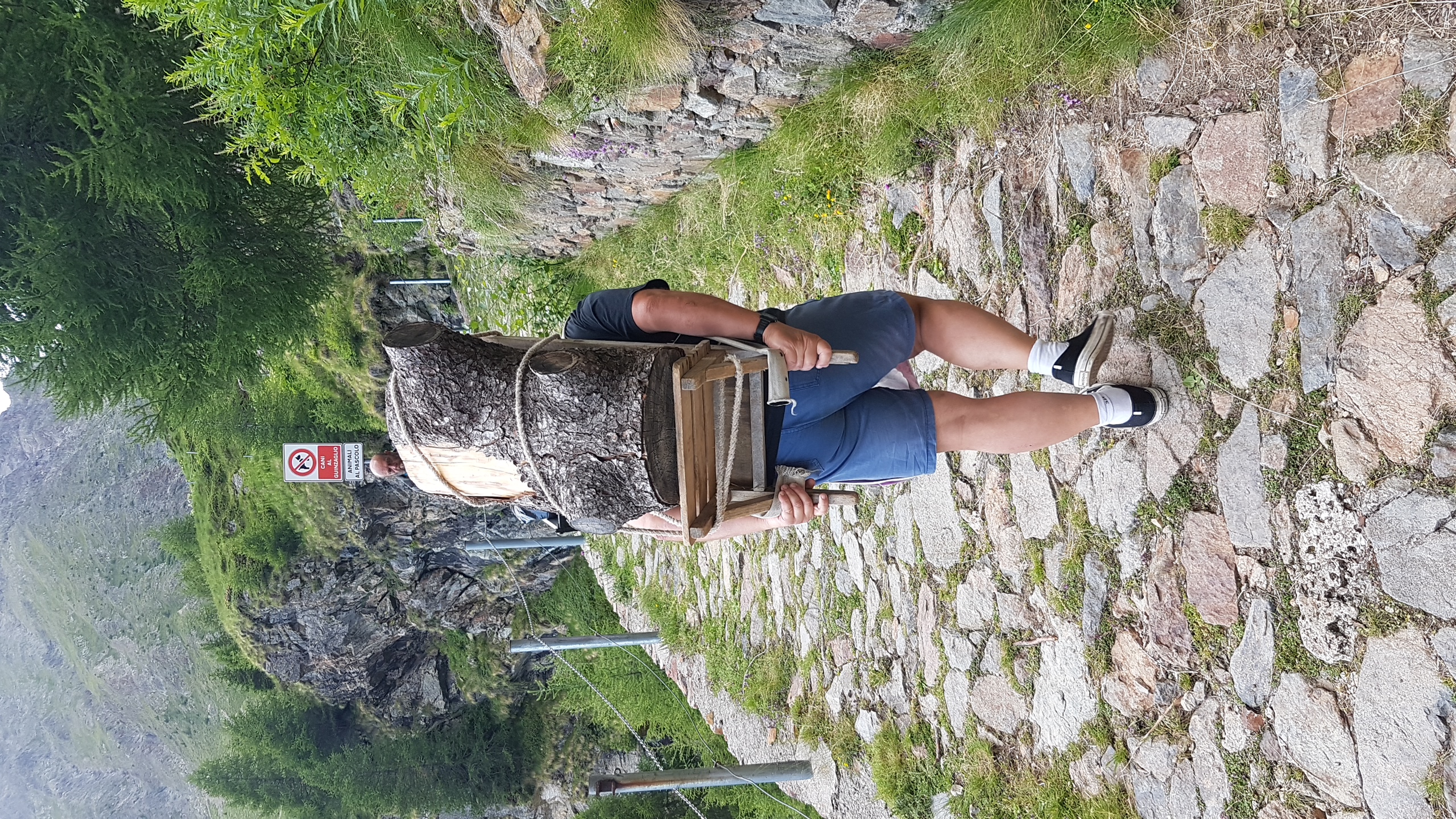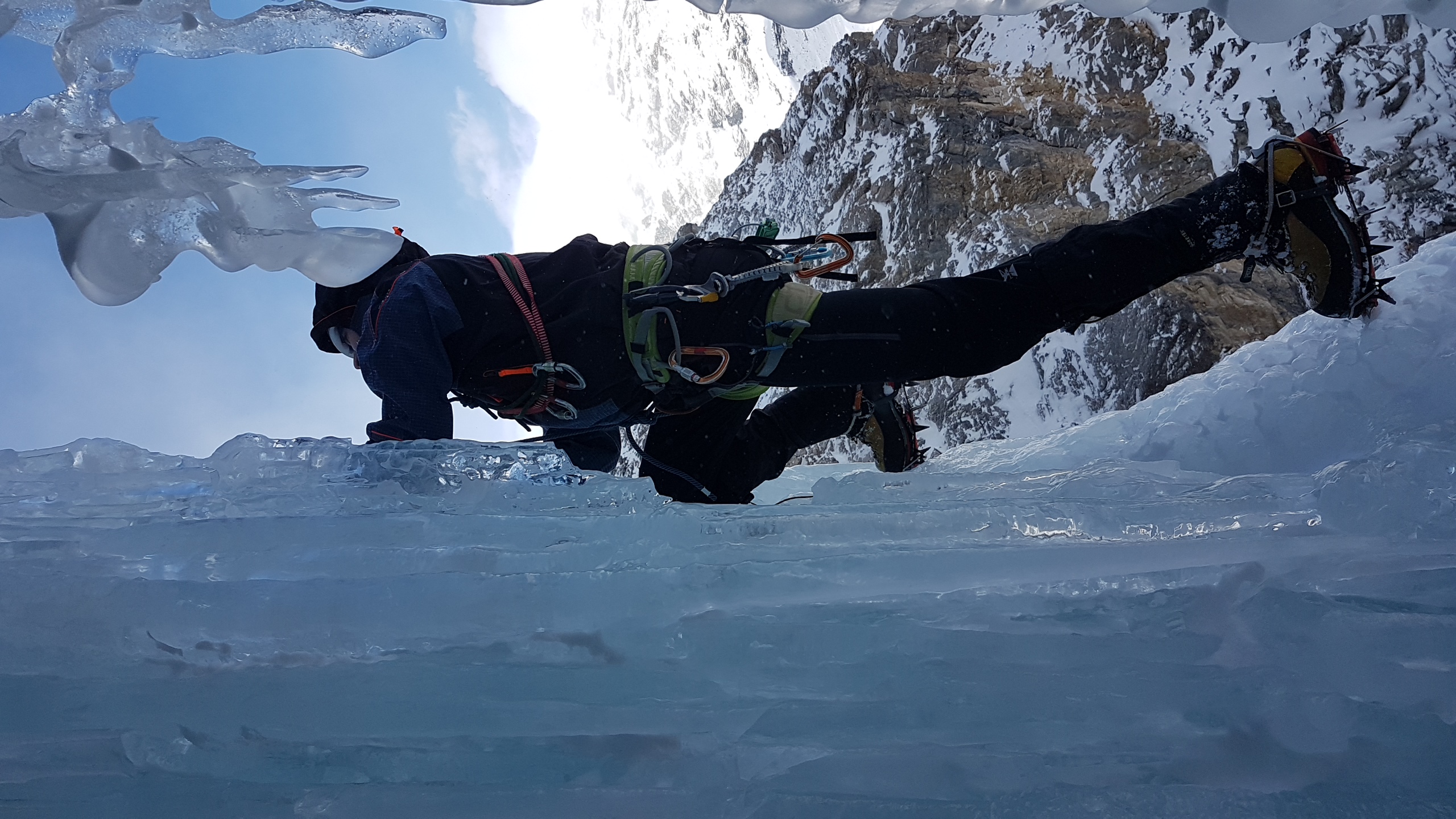
Suggestions for gear.
* Comfortable hiking boots! Break them in before coming: use them for at
least a couple of hikes. If you have older boots, waterproof them with
some boot grease or equivalent. You can also use hiking shoes if you
prefer, as the trails will not be demanding at all. However, hiking
shoes get wet easier if it rains. Given the high temperatures in Italy
in the summer, it is highly improbable we'll have to cross any snow
fields. Avoid flat-soled shoes as they are slippery if it rains.
* Rain gear, for comfortable walking in the rain:
goretex (or similar waterproof) jacket and overpants (or hiking
pants). If you don't have good rain gear (or you're uncomfortable in
the rain), a large lightweight umbrella usually works fine (unless
there's wind, which is not typical). If you don't mind getting your
legs wet when it rains, a possibility is to forgo the overpants and
just use shorts when it rains.
* Fleece and warm clothes. Italy is a warm country in
July (actually, blistering devastatingly hot, stellar plasma-like is
more appropriate), but we will be sleeping at 2500 m altitude and
higher. Expect temperatures that can dip to 10 degrees Celsius or
lower. A great trick is the onion strategy: bring many (not too
heavy) layers and modulate them depending on the temperature. With N
clothing layers, you have 2N-1 possible combinations (excluding naked): that quickly covers a wide temperature range.
* A comfortable backpack to bring your stuff. No baggage service
will be provided!
* Light bathing suit (if you're not comfortable
skinny-dipping!). We'll be stopping at some beautiful lakes along the
way.
* Paper and pencil. Laptops are discouraged (as there will be
limited access to electric power). A laptop and a projector will be
provided by the organization for the talks. If you're giving a talk,
bring it on a usb pen drive (powerpoint, libreoffice or pdf). Print
all the papers and stuff you will need and bring a usb pen drive with
the papers you might need (you can consult them on the organizers'
computer).
* A small, light flashlight (any cheap LED model will be fine).
* Earplugs!!!! (You will be sleeping in shared rooms.)
* SUNSCREEN and HAT. Also sunglasses, if you're
sensitive. Sunscreen may be MANDATORY, depending on your skin tone: UV
can be brutal at altitude.
* Change of clothes. We WILL be sweating. Merino wool baselayers
(e.g. t-shirt and underwear) are recommended but expensive. Capilene
and synthetics are a good cheap alternative. Cotton clothes and blue
jeans are banned: once they're wet they do not dry (we WILL get wet,
either from sweat or rain). Do not use.
* Bedding for the huts. Look for disposable sleeping bag sheets or
sleeping bag liners (silk ones are very nice, light and not too
expensive, cotton ones are a cheaper and heavier alternative).
* Toothbrush, toothpaste and towel (the mountain huts may have
limited towels for guests, bring a small one for safety).
* Small roll of toilet paper/paper napkins.
* Lightweight water bottle. A disposable 1L or 1.5L coke bottle is
great: it's durable (sigh), light, tasteless, and squishable when empty.
* Extra shoes or slippers: huts usually have slippers but be aware
that we'll be filling them, so there won't be enough for everybody. If
you're uncomfortable being barefoot, bring a LIGHTWEIGHT pair.
* Band aids (or electrical tape) for blisters (if you think you
might get any).
Optional:
* Comfort food, such as energy bars and chocolate (meals will be provided in the mountain huts, but do not
expect gourmet food!)
* Phone. It will be difficult to charge and there will be limited
service at altitude. Things will be better in the lower parts of the
tour. If you do bring a phone, also have a usb-cable for charging it:
we might not have enough plugs for everyone, but we might have usb
ports.
* Walking sticks. Some people love them for walking (and they're
great downhill if you have knee problems). Carbon ones are more
expensive but extremely lightweight.
Not required:
* Remember that you'll be lugging
everything on your shoulders for 5 days. The art of a successful hike
is not "knowing what to bring", but "knowing what to leave home".
********************************************************************************
Warnings:
********************************************************************************
DO NOT LITTER: please bring away everything you
bring with you (except used toilet paper: if you need to go to the
bathroom in the wild, please cover after yourself, eg with rocks).
Insurance: we won't have any insurance and you'll be
responsible for your own decisions in the mountains. So, don't do
anything you're not comfortable with, independently of what everybody
else is doing! Italian citizens (possibly European citizens?) can be
airlifted at no cost in case of a serious medical emergency, the heli
service being part of our national health care system. Please find out
if you might need a medical insurance to cover such costs, which can
be substantial, and get one if needed. We will never be more than a
few hours downhill-hike from main roads (although we won't cross any),
so you're not going to be stuck in the middle of nowhere if you need
to leave for any reason. Most of the mountain huts we will be staying
at can be reachable with off-road vehicles.
Do
not disturb wildlife (we might be seeing marmots, ibex, chamois,
vultures, eagles). Do not pick flowers: if you see a nice flower, take
a picture of it. It'll last longer, and is much cheaper than a
possible fine if you're in some natural reservation.
If you see a snake, keep your distance, as it might be a viper
(triangular head, blunt tail, vertical eye slits). It's quite rare to
see them as they're very shy (the non-shy ones having all been killed
over the centuries). Vipers are poisonous, but not very
dangerous. Fatalities from viper bites are extremely rare (almost
impossible if you're a healthy adult), but apparently a viper bite is
extremely painful, you'll need to be airlifted to a hospital, etc. In
the extremely unlikely case you're bitten, keep still: the poison
spreads itself through the lymphatic system, so it won't spread if you
don't move. If you're talking, they'll hear you and go away. One more
reason for talking about physics while hiking :-)
Back


